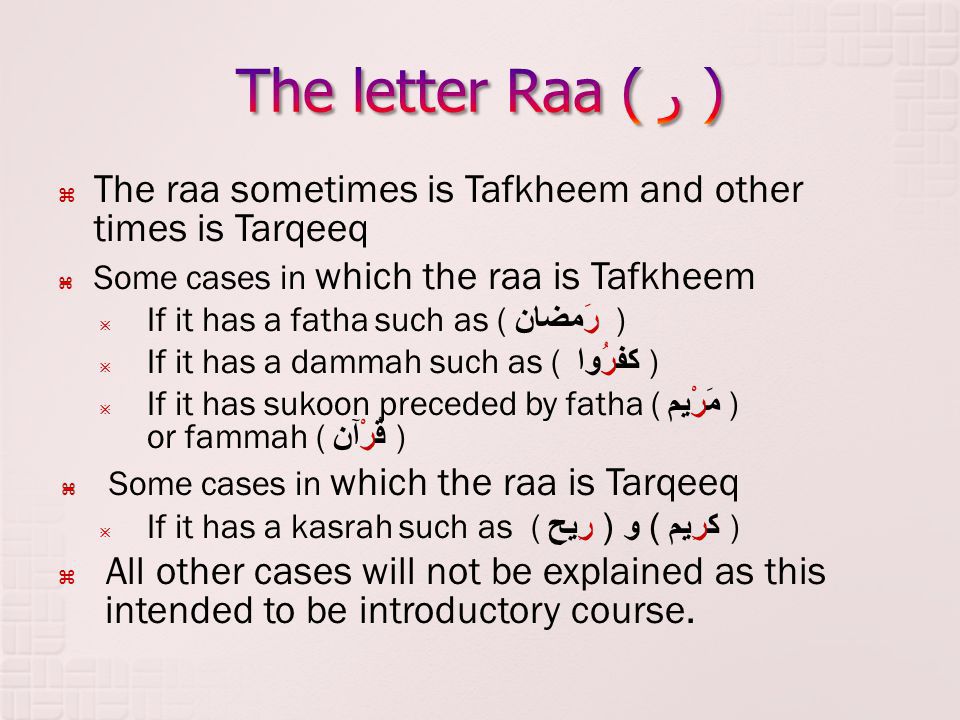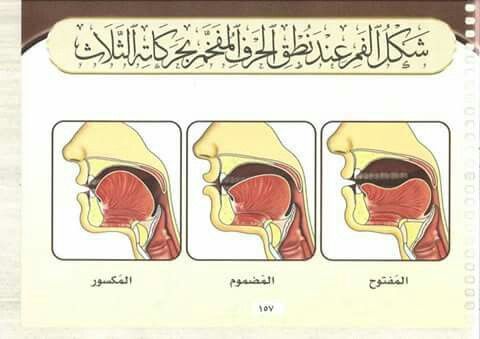The art of Tajweed, the proper pronunciation and recitation of the Quran, is fundamental to understanding the nuances of the holy text. Among the core concepts of Tajweed are Tafkheem and Tarqeeq in tajweed, essential techniques that give Quranic recitation depth, beauty, and clarity. These techniques dictate how certain Arabic letters are pronounced to ensure that the reciter reflects the Quran’s meaning and spirit.
In this blog, we’ll explore Tafkheem and Tarqeeq: Essential Tajweed Techniques, how they shape Arabic letters, and answer some frequently asked questions.
Tafkheem and Tarqeeq: Essential Tajweed Techniques
What is Tafkheem?
Tafkheem and Tarqeeq in tajweed, Tafkheem (تفخيم), often translated as “thickening” or “making heavy,” is a technique that involves giving a letter a “heavy” sound by raising the back of the tongue towards the soft palate. This deepens the sound, creating a reverberating or echoing effect. Tafkheem primarily applies to the letters called “مستعلية” (Musta’liyah) or “elevated” letters.
The letters subject to Tafkheem are collectively known as istiklal or “heavy” letters and include:
-
ق (Qaf)
-
ص (Sad)
-
ض (Dad)
-
ط (Taa)
-
ظ (Zaa)
-
خ (Khaa)
-
غ (Ghayn)
In words containing these letters, the pronunciation should reflect a depth or fullness, lending a solemn and weighty feel to the recitation.
What is Tarqeeq?
Tafkheem and Tarqeeq in tajweed, Tarqeeq (ترقيق), meaning “lightening” or “making thin,” is the counterpart to Tafkheem. This technique gives letters a “light” quality, with a softer and more delicate resonance. Instead of lifting the back of the tongue, the reciter keeps the tongue flat, leading to a sharper, more straightforward sound.
In Tarqeeq, the letters are pronounced without the heaviness, creating a clear and gentle tone in the recitation. Some letters that typically follow Tarqeeq include:
-
ب (Ba)
-
ت (Ta)
-
ث (Tha)
-
ج (Jeem)
-
د (Dal)
-
ذ (Dhal)
-
ز (Zay)
-
س (Seen)
-
ش (Sheen)
However, there are some exceptions where certain letters, like Ra (ر) and Lam (ل), might alternate between Tafkheem and Tarqeeq in tajweed, based on their position, the surrounding letters, or their voweling (harakat).
Why Are Tafkheem and Tarqeeq in tajweed Important?
Pronouncing letters with proper thickness or thinness as per Tafkheem and Tarqeeq in tajweed affects the overall sound and meaning of the words. Incorrect application can lead to a change in meaning, which in Quranic recitation can alter the message conveyed by the sacred text. For example, improper Tafkheem of a letter can make a light word sound heavy, which could distort the intended impact of a verse. Understanding and practicing these techniques help preserve the beauty and accuracy of the Quran.
Levels of Tafkheem in Tajweed
Tafkheem and Tarqeeq in tajweed, In Tajweed, Tafkheem (thickening or heaviness) has different levels of intensity based on the context in which the heavy letters are used. The level of Tafkheem applied affects the degree of resonance and fullness of the sound produced. This variation is essential for maintaining the correct pronunciation and flow of the Quranic recitation.

Here’s an overview of the levels of Tafkheem:
-
Highest Level of Tafkheem
- The highest level of Tafkheem occurs when a heavy letter has a Fatha (a vowel that makes the “a” sound) and is followed by an Alif Maddah (a long “aa” sound). This combination amplifies the heaviness and gives the sound a rich, deep quality.
Example: The letter ط in the word طَامَّة (Taamah).
-
High Level of Tafkheem
- This level occurs when a heavy letter has a Fatha without an Alif Maddah following it. The Fatha adds strength to the sound but is not as intense as when followed by an Alif.
Example: The letter ق in the word قَلْب (qalb, meaning “heart”).
-
Middle Level of Tafkheem
- This level is present when a heavy letter has a Dammah (a vowel that produces the “u” sound). Dammah produces a strong sound but not as strong as the Fatha or Fatha with Alif Maddah.
Example: The letter ص in the word صُبْح (subh, meaning “morning”).
-
Lower Level of Tafkheem
- This level applies when a heavy letter has a Sukoon (no vowel) and follows a Dammah, which gives it a more subtle heaviness.
Example: The letter ط in the word أَطْهَر (at’har, meaning “purer”).
-
Lowest Level of Tafkheem
- The lowest level occurs when a heavy letter has a Kasrah (a vowel that produces the “i” sound). Kasrah tends to lighten the Tafkheem, reducing its intensity and giving a more delicate resonance. Even though the letter is heavy, the Kasrah tempers its fullness.
Example: The letter ص in the word صِدْق (sidq, meaning “truth”).
Letters that Can be Heavy or Light
Two letters, Laam (ل) and Raa (ر), can be pronounced with either Tafkheem or Tarqeeq depending on specific conditions.

- Laam (ل): In most cases, Laam is recited with Tarqeeq. However, when it appears in the word “Allah” and is preceded by a Fatha or Dammah (a or u sounds), it is pronounced with Tafkheem. When preceded by a Kasrah (i sound), it is pronounced with Tarqeeq.
- Raa (ر): This letter can vary between Tafkheem and Tarqeeq based on several factors, including the vowel that follows or precedes it. If Raa has a Fatha or Dammah, it is pronounced with Tafkheem. If it has a Kasrah, it is pronounced with Tarqeeq.
What are the different types of Raa?
Tafkheem and Tarqeeq in tajweed, In Tajweed, the letter Raa (ر) has several variations in pronunciation based on its position, surrounding letters, and the type of vowels associated with it. These variations, known as types of Raa, determine whether Raa should be pronounced with Tafkheem (heaviness) or Tarqeeq (lightness). Let’s go over these types and when each applies.
-
Heavy Raa (Tafkheem)
Raa is pronounced with heaviness when it has a deep, full-bodied sound. This type of Raa occurs in the following cases:
- When Raa has a Fatha (a sound): This requires the heaviest Tafkheem, as the Fatha sound opens up the pronunciation and creates resonance.
- Example: رَحْمَة (rahmah)
- When Raa has a Dammah (u sound): The Dammah produces a slightly lighter, yet still heavy, sound.
- Example: رُسُول (rasool)
- When Raa is in a Sukoon state and follows a letter with Fatha or Dammah: In this case, Raa maintains heaviness because of the preceding vowel sound.
- Example: قُرْآن (Quran)
- When Raa is at the end of a word with Sukoon and is preceded by a Fatha or Dammah: Raa remains heavy in this final position.
- Example: مَغْفُور (maghfoor)
2. Light Raa (Tarqeeq)
Raa is pronounced with lightness when it has a more delicate, airy sound. Tarqeeq applies to Raa in the following situations:
- When Raa has a Kasrah (i sound): The Kasrah naturally lightens the sound, requiring Tarqeeq.
- Example: فِرَاش (firaash)
- When Raa is in a Sukoon state and follows a letter with Kasrah: In this case, Raa retains a light quality because of the influence of the Kasrah.
- Example: مِرْيَة (mirya)
3. Transitioning Raa (Middle Sound)
In some cases, Raa can be influenced by context and appears to have a middle-ground sound that is neither fully heavy nor light. This typically happens in cases where Raa is affected by surrounding letters, but its sound is moderated rather than distinctly heavy or light.
Practical Tips for Tafkheem and Tarqeeq in tajweed
- Understand the Context: Tafkheem and Tarqeeq aren’t applied uniformly across all words. The letter Ra (ر), for instance, may be “heavy” (Tafkheem) when it appears with a fatha or dammah but “light” (Tarqeeq) when it has a kasra. The same goes for Lam (ل) in specific cases like “Allah.”
- Practice with Audio References: Listening to experienced Qaris (reciters) who observe Tajweed rules can help tune your ear to the distinctions. Notable reciters often embody these subtleties, so practicing alongside recordings can enhance your proficiency.
- Mimic the Physical Movements: Focus on tongue placement and mouth shape. To produce Tafkheem, lift the back of the tongue and create a slight constriction; for Tarqeeq, relax the tongue and keep it flat
- Consistent Practice: Regular recitation and repetition are essential. Start with simple words or phrases, paying close attention to individual letters before progressing to full verses or chapters.
Conclusion
Tafkheem and Tarqeeq in tajweed, are pillars of Tajweed that enhance the beauty, depth, and precision of Quranic recitation. While these techniques require practice and dedication, they enrich the recitation experience and allow for a fuller connection with the Quran. Reciters honor the sacred text and its timeless message by embracing the art of Tajweed, particularly Tafkheem and Tarqeeq.
(FAQs)
-
Can Tafkheem and Tarqeeq affect the meaning of words in the Quran?
Yes, improper pronunciation can alter the meaning of words. The purpose of Tajweed is to preserve the divine message, so adhering to these rules ensures clarity and respect for the text.
-
How can I tell if a letter should be read with Tafkheem or Tarqeeq?
This largely depends on the letter itself, its position, and the surrounding context. While most heavy letters always retain Tafkheem, Ra, and Lam may switch based on factors such as vowel markings. Consulting a Tajweed teacher or using reference materials can help clarify these rules.
-
Is it necessary for beginners to learn Tafkheem and Tarqeeq?
Learning Tafkheem and Tarqeeq can be challenging initially, but it’s recommended for beginners to focus on these as core Tajweed principles. With practice, it becomes easier, and these techniques can make a profound difference in the beauty and correctness of recitation.
-
Are there exercises to help with Tafkheem and Tarqeeq?
Yes, a great way to start is by reciting letters in isolation with different vowel sounds, concentrating on tongue and mouth position. Reciting letters like Sad and Seen back-to-back can reinforce the distinction between Tafkheem and Tarqeeq.

